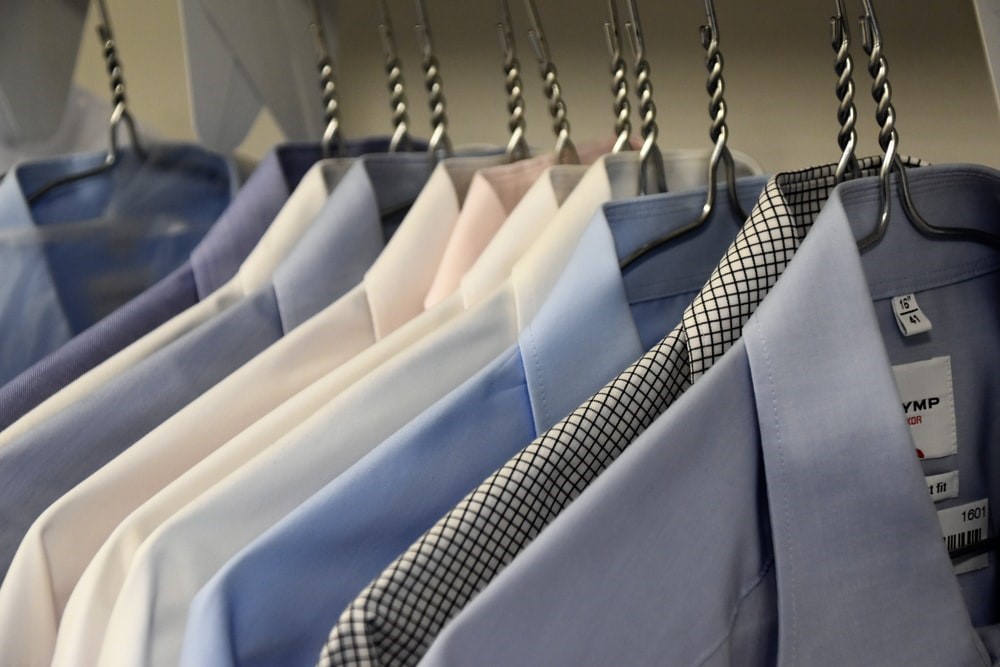Dry cleaners often use starch to give your cotton and linen items a crisp, structured, and wrinkle-free appearance. Starch is also great for preventing soiling and wrinkling as it created a resistant barrier across the fabrics, which further simplifies the ironing process. So if you prefer a more professional finish to your outfits, starch is the way to go.
Starching is an excellent way to add a crisp edge to your office shirts, dress pants, and other clothing items.
Keep reading to learn what exactly starch is, when and how it should be done:
What Is Starch?
Starch is a plant-based compound with several practical and beneficial uses. When mixed with warm water, starch turns into a thick, sticky, white paste. Historically, this paste was used as an agent for thickening substances as far back as ancient Egyptian times.
While starching cotton, linen, and other cloths have ancient roots, the practice had taken a backseat until recently.
Our clients continuously want to know: “can you starch wool?” or “can you starch rayon?” among other garments. To nip the confusion in the bud and to help you get a more polished look, read this guide.
Learn how starching acts as a stain-protective barrier and keeps wrinkles at bay for longer.
Pros & Cons of Starching Clothes
Here are some leading benefits and shortcomings of starching clothes:
| The Good | The Bad |
| Gives a smooth, crisp finish | Starched clothes might feel stiff |
| Makes cleaning clothes easier as sweat and dirt will stick to the starch instead of the fabric. | If done wrong, starching can breakdown the fabric of your garment |
| Makes ironing easier | |
| Keeps wrinkles at bay | |
| Starched items provide more wear |
How to Starch Clothes?
When it comes to starch, you have the option to either take your clothes to a professional dry cleaner or do it yourself at home. However, be warned that a great deal of experience, practice, and knowledge are necessary to get starching right. If done wrong, you’ll end up damaging your favorite Peter Millar shirt. Hence, it’s highly advised to avail expert services of a professional dry cleaner.
In case you feel confident enough to undertake the task yourself, here’s how you can do it:
Step #1: Thoroughly wash dry the garment to remove all dirt that could interfere with the starch properties as it helps preserve the fabrics’ fibers.
Step #2: Place the garment on a flat surface, preferably an ironing board.
Step #3: Evenly apply starch mixture or pre-made product all over the garment, and allow it to steep in.
Step #4: Using an iron, press lightly using an iron. Ensure the iron is set at the garment’s recommended heat level.
Step #5: Finally, hang the item and let starch do its job for a crisp, edgy finish.
Fabrics That Should Not Be Starched
Starching might not require rocket-science skills, but you do need to be careful. Moreover, some fabric can’t be starched or rather should not be starched regardless of how tempted you are to experiment. These include any items that you wouldn’t want to be stiffened, such as:
- Delicate synthetics
- Cashmere
- Silk or silk blends
- Wool or wool blends
Additionally, some fabrics traditionally cannot be starched and need a fabric sizing instead, such as durable synthetics, like nylon or polyester, as the fabric sizing protects the material from harm.
5th Avenue EnRoute Cleaners: Starching Clothes, The Right Way.
If you wish to have crisp, structured, and wrinkle-free garments, don’t look far. Trust in the expert dry cleaners of 5th Avenue EnRoute Cleaners. We take great pride in providing incomparable dry-cleaning services – with or without starching – at the best possible rates.
We conveniently deliver professional dry-cleaning services in Ashland, Mechanicsville, and Richmond. We also offer free delivery and pick-up services.
To sign up and save dollars via our incredible discounts and offers, click here.


